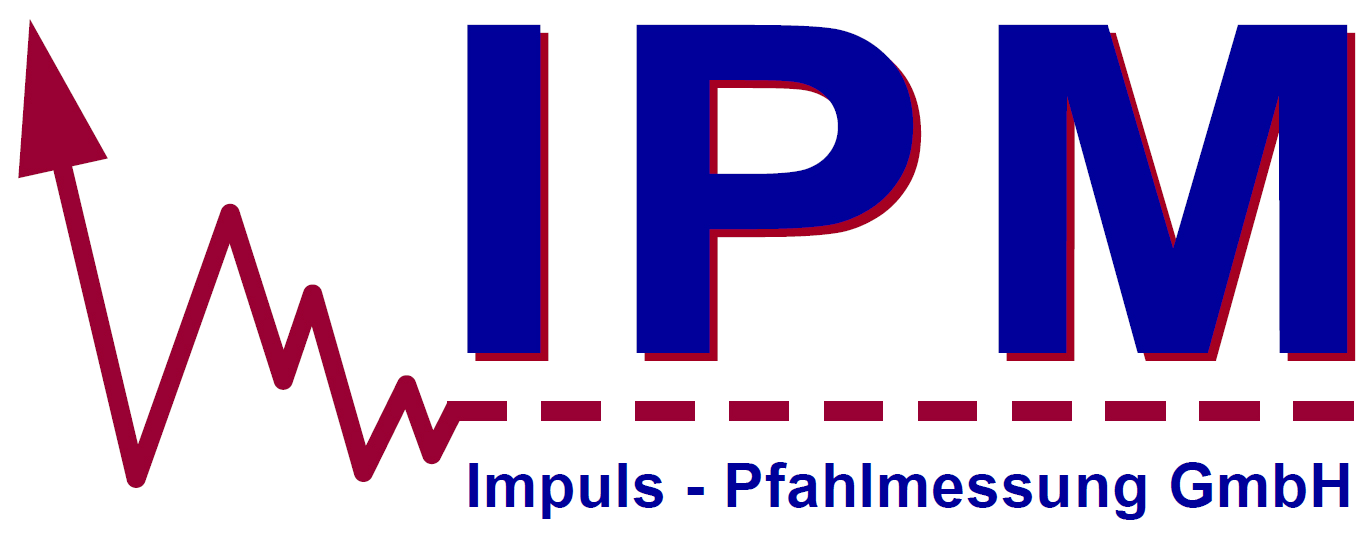Overview of services
Pile testing by IPM Impuls Pfahlmessung GmbH.
We check quality
To learn more, please click here.
Get in touch now.
Static test load
Principle of static test load
A hydraulic system is used to generate the load, consisting of a power unit up to 700 bar, with electronically controlled constant-pressure control and several identical two-way presses. The exact force is measured by calibrated load cells. Steel trusses and reaction piles are used as abutments. Dead loads are also possible for low loads. The vertical and horizontal pile displacements are measured with electrical precision dial gauges with a resolution of 1/100mm. Strain gauges, chain extensometers and pile foot load cells can be used to determine skin friction and peak pressure.
Current project excerpt:
- EÜ Stetten
- Herten AGR – Foundation for new heat exchangers
- EÜ Weinberge / EÜ Lake Road – Frankfurt/Oder
- Neubrandenburg – ring road
- Brunsbüttel – New construction 5. lock chamber
- Berlin – A 114, BW 19212
- Hamburg – Station new building Elbbrücken
- Buxtehude – Overpass K 40 via the A26
- Ingolstadt – Congress Hotel KHI
- Regensburg – A3 Nürnberg-Passau
6-strip extension
- Oslo – Norwegen – HOVEDBANEN OSLO S AREA 120
- Genf – Schweiz – Opale
- Linz – Österreich – New Bruckner Tower
- Farmsum – Niederlande – Waste to Energy Delfzijl
- Reykjavík – Island – INNNES Warehouse Iceland
finalized projects
Dynamic test load
Principle of dynamic test loading
A shock wave is introduced into the pile with the help of a free-fall pile driver. Here the pile to be measured is regarded as an elastic rod with one-dimensional wave propagation.
The force of the deformation of the pile under the impact is measured at the pile head by means of strain gauges. Furthermore, the acceleration of the shock wave is recorded as another type of force measurement by means of an acceleration sensor. By integration, the speed curve is determined. The product of this compression speed and the pile impedance (Z=E*A/c) results in the second type of force measurement. Compared to the pure force measurement, this calculation includes the vector from the acceleration.
By comparing these two independent measurements, a distinction is made between the force wave running downwards to the base of the pile and the force wave running upwards, which is reflected by skin friction and peak pressure. The limit load results from the measured skin friction and the peak pressure.
Current project excerpt:
- K 7725 South bypass Kehlen
- Stuttgart – New building OFFICE ONE
- Elbe-Lübeck Canal – Büssau Lock
- Erfurt – TEAG CAMPUS
- Brunsbüttel – New construction 5. lock chamber
- Hamburg Hafencity – Baakenhafen Quarter
- Lübbenau – Kaufland Logistics
- Kiel – Ostseekai – new terminal LP 28
- Frankfurt am Main – Continental parking garage
- Trier – New construction of vocational training and technology centre
- Linz – Österreich – New Bruckner Tower
- Linz – Österreich – A7 Mühlkreis motorway – Voest bridge
- Bratislava – Slowakei – Sky Park
- Rostock – Seaport Ölhafen
- Berlin – CCHPP Marzahn – SIEMENS combined heat and power plant
finalized projects
Integrity check
Principle of the hammer blow method – Low-Strain Integrity Test
The measuring method is based on the pulse-echo method.
A shock wave is introduced into the pile by striking it with a special hand hammer. This impulse passes through the pile at a material-dependent speed. This range results from the age of the concrete, the concrete composition and the proportion of reinforcement.
If the input signal encounters impedance changes (e.g. cross-sectional changes), echo signals are reflected to the pile head. These are recorded by a highly sensitive transducer and stored and evaluated by a measuring computer.
Principle of the ultrasonic method – cross-hole integrity testing
One transmitter and one receiver probe each are lowered and raised simultaneously in two water-filled measuring tubes. The ultrasonic wave is permanently transmitted by the transmitter in the first measuring tube, passes horizontally through the pile concrete to be tested and is picked up by the receiver in the second measuring tube. The depth is continuously determined by the depth gauge. The results are displayed and stored by the depth gauge.
finalized projects
Further services
Our field of activity includes everything that is possible with 40.000 kN hydraulic power, precision measurement technology.
